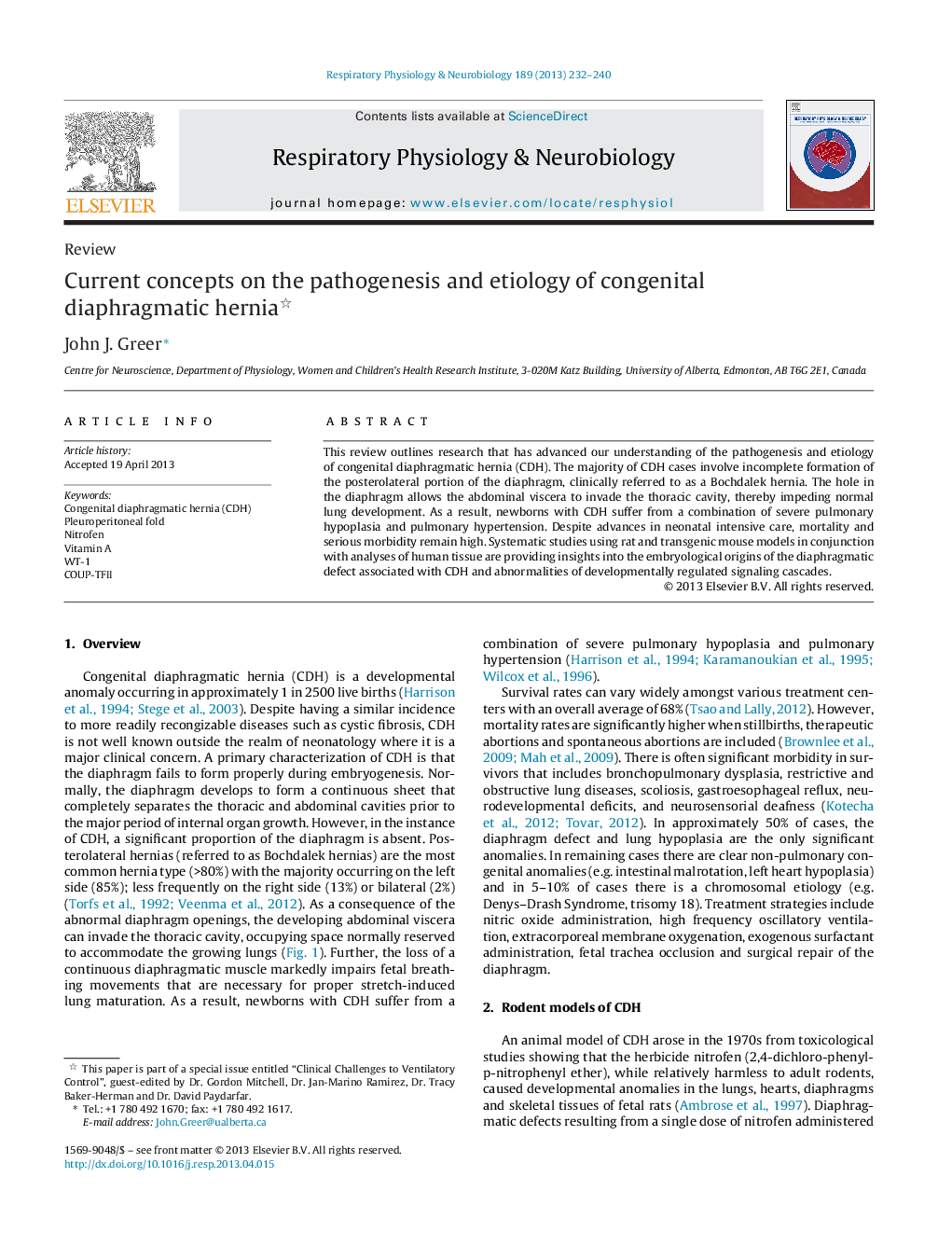| Article ID | Journal | Published Year | Pages | File Type |
|---|---|---|---|---|
| 5925984 | Respiratory Physiology & Neurobiology | 2013 | 9 Pages |
Abstract
This review outlines research that has advanced our understanding of the pathogenesis and etiology of congenital diaphragmatic hernia (CDH). The majority of CDH cases involve incomplete formation of the posterolateral portion of the diaphragm, clinically referred to as a Bochdalek hernia. The hole in the diaphragm allows the abdominal viscera to invade the thoracic cavity, thereby impeding normal lung development. As a result, newborns with CDH suffer from a combination of severe pulmonary hypoplasia and pulmonary hypertension. Despite advances in neonatal intensive care, mortality and serious morbidity remain high. Systematic studies using rat and transgenic mouse models in conjunction with analyses of human tissue are providing insights into the embryological origins of the diaphragmatic defect associated with CDH and abnormalities of developmentally regulated signaling cascades.
Related Topics
Life Sciences
Biochemistry, Genetics and Molecular Biology
Physiology
Authors
John J. Greer,
